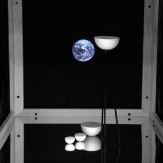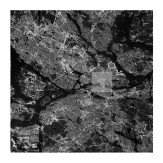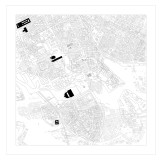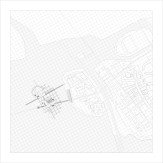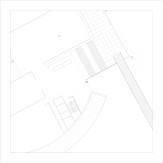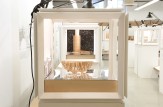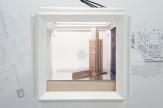Selected Undergraduate Design Studio Projects--Design IV, Spring 2014
Spring 2014
Professor Diane Lewis, Professor Peter Schubert, Instructor Daniel Meridor, Instructor Robert Estrin and Visiting Assistant Professor Daniel Sherer
ARCHITECTURE OF THE CITY
STAGE: Staging a visionary humanitarian program of this time
Study one to be done within Teatrino and in drawing, model, etc.
Form to be determined as conceived by each participant…begin with drawings.
PROGRAM/SITE—SITE/PROGRAM: Study for preliminary concepts of project derivation
Students selected an approach to one or more of the following entries into the research. This work preceded and informed the eventual proposal. The study of program and site relationship is key to establishing a philosophy of form and signification for the work.
1. Approach: Commemorative. Research an event that is important to you in regard to emancipation with the memory of civilization. Explore the relation of the selected event to space, a place, a city, a landscape, the planet etc., as you imagine it. Explore its representation as the focus of a plan that responds to the limits of the Teatrino space.
2. Approach: The reading of place: the architectural still life—the civic conscious and architectural memory. Select a work of architecture made by a singular architect or one of earlier collective authorship as an element of a civic still tectonic still life. Crop its plan to respond to the limits of the Teatrino space.
3. Approach: The reading of place: civic fabric-urban subconscious. Select a condition within a city from memory or any other source that you find intriguing, compelling, interesting and crop it to be the focus of a plan that responds to the limits of the Teatrino space.
4. Approach: The reading of the place: natural. Select a formation of natural conditions that you consider to be in itself or to have a memorable or definitive architectural reading. Crop it to be the focus of a plan that responds to the limits of the Teatrino space.
Drawings are to be 24 inches square with an implicit centered 21 inch square.
A required condition of plan view is first with the option of your interest in exploring one or more of the plan conditions that respond to the approach/principle categories as elevation, section, backdrop, etc., relative to construction within the Teatrino as you wish. Sketching, drawing, collage and eventually model elements spring from this foray.
Consider the beauty of the Teatrino as resource by which suspension of scale or the implementation of any implicit scale you wish to view are available to you.
Select the approach or approaches from the list that you find most compelling and prepare to address the reasons.
Projects
-
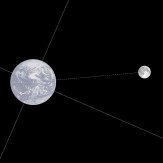
The Blue Marble
Back
The Blue Marble
Charlie Blanchard
The Blue Marble at Stockholm, Sweden
‘To see the earth as it truly is, small and blue and beautiful in that eternal silence where it floats, is to see ourselves as riders on the earth together, brothers on that bright loveliness in the eternal cold – brothers who know now they are truly brothers.”
-Archibald McLeish
EVENT THAT INSPIRED EMANCIPATORY PROGRAM:
In 1972, Harrison Schmitt, a geologist turned astronaut aboard the Apollo 17 spacecraft bound for the surface of the Moon for the final time, took a photograph. At 28,000 miles out, he captured the entirety of the Earth in a way that had never been seen before – as a fully illuminated disk. Since then, the Blue Marble (as it has subsequently become known) is now one of the most reproduced images in existence, and the unifying symbol for the nascent environmental movement. It has been credited with changing the way we think about our planet.
Frank White writes about the significance of the Overview Effect - a phenomenon he describes as the moment an astronaut first glimpses the Earth from space, and experiences a cognitive shift in awareness. Borders and boundaries become insignificant, everything becomes interconnected and our planet becomes a tiny spaceship floating in an infinite universe.
The same year the photograph was taken, NASA’s Project Apollo ceased, and the UN called the Conference on the Human Environment in Stockholm – the first Earth Summit. It took seeing the Earth in all its fragility to have us look back rather than continue to look away.
‘We went to explore the moon, but in fact discovered the Earth’ – Eugene Cernan
The proposed program is titled The Blue Marble, and is sited off the island of Riddarholmen in Stockholm. A new typology of island is envisioned, one that derives its structural grid and shape from looking at the Earth from the Moon. The Elements are the suspended within the island, emulating the fragility of our planet suspended in space. These elements include a Museum, Conference Hall, Observatory and a Space for Reflection.
RAISON D’ETRE FOR SITE SELECTED:
Stockholm is known as the Venice of the North. It is a city built on an archipelago, and in 1972 it was chosen for the Conference on the Human Environment, or the First Earth Summit. In siting the proposal in the center of the city, the Earth Summit is given a permanent home, on that reflects current problems facing our planet. The city and constructed island are a constant reminder of human impact on our fragile Blue Marble.



